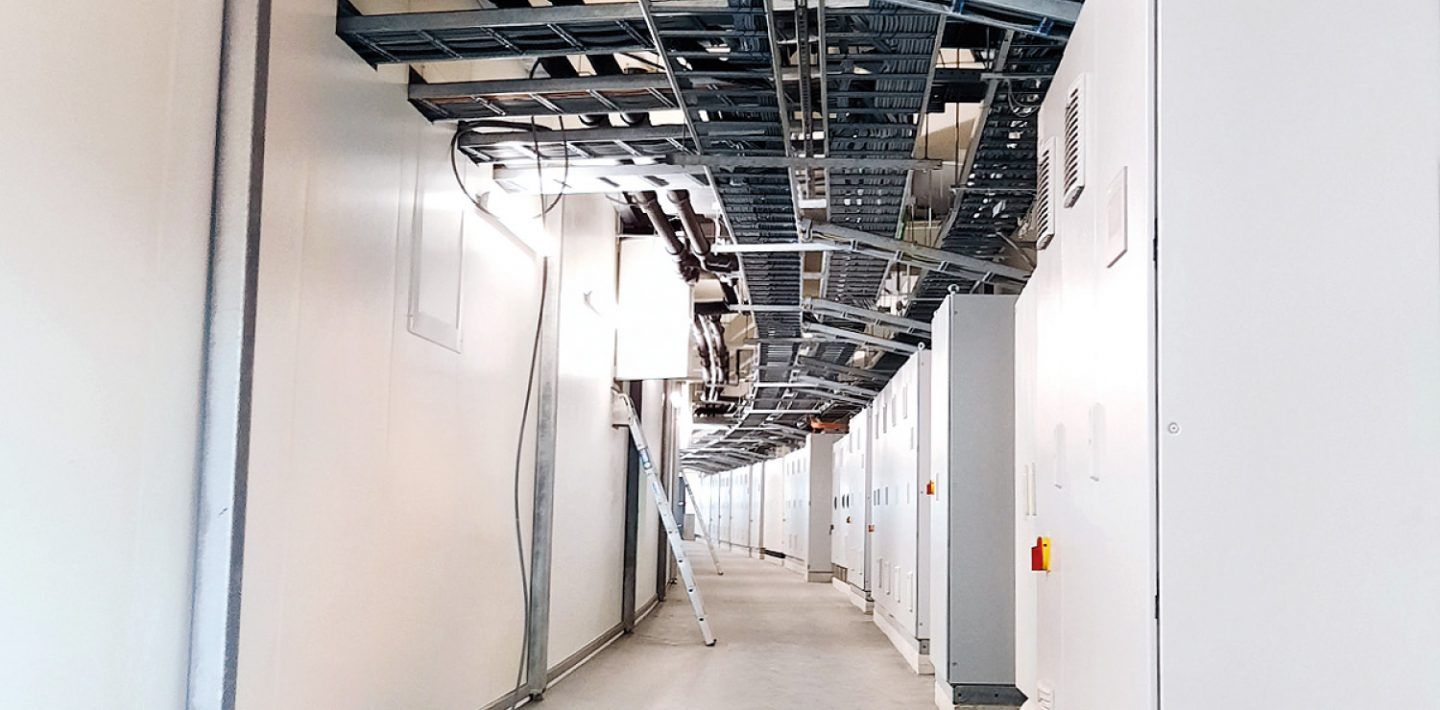Find cable drums quicker with the new logistics concept from LAPP
Where is the cable? Fitters of the automation specialist Kremer used to spend a lot of time searching for the parts they needed to install. Together with LAPP, the Dutch company has developed a simple and effective alternative.
Staying organised just means you’re too lazy to search – so say people who aren’t too particular about keeping things tidy. Some even claim that chaos is the necessary consequence of their genius. You may believe it or laugh at the thought, but one thing is certain: disorder has no place in industrial facilities, particularly warehouses. It costs time and therefore money, and breeds errors and poor quality. A company like Kremer simply cannot allow this. The company in s-Heerenberg in the Netherlands specialises in complex automation projects. Kremer designs and builds turnkey production plants that are set up at the customer site.

These systems consist of tens of thousands of parts, sometimes similar ones, which need to be installed in the right place at the right time. It is therefore highly important for a component to be reliably available at the installation site when the fitter needs it. This has not always been the case for the increasingly large-scale projects. Materials were simply left unsorted on pallets somewhere, and fitters had to search for parts and transport them to their workplace, sometimes on different floors. This could not be allowed to continue, which is why Kremer sought a better solution together with its suppliers – with LAPP leading the way. LAPP has been supplying Kremer with cables for many years, mainly different variants of ÖLFLEX® and ETHERLINE®. Some Kremer customers explicitly request cables from LAPP, which is why Kremer orders exclusively from this global market leader for integrated cable and connection systems in Stuttgart. “LAPP is renowned on the market and known for its solution-oriented work methods,” says Adri Migchels, who looks after customers in the Netherlands as an Account Manager at LAPP Benelux.
This is why LAPP was also the first point of contact when Kremer sought a new concept for vendor part logistics. After receiving an order, cables are no longer packed and sent randomly on pallets or in boxes, and then stored by Kremer to be collected later for ongoing projects and transported to customer sites, where fitters would then have to sort through them again. Instead, LAPP assembles the cable drums at its warehouse in Ludwigsburg in the way they would later need to be handled at the customer site. In addition, the pallets are already labelled in a comprehensible manner by LAPP, as stipulated by Kremer. Ideally, parts no longer need to be stored in Kremer warehouses. Instead, they are combined into “kits” and forwarded immediately to the customer site for assembly. These kits are pallets on which the fitter can find all the parts they need for their next work steps.
Kremer collaborated with LAPP to come up with a system that works with lists of pallets and cabling. The lists clearly indicate on which pallet the required material is located. To make the work of fitters on large projects easier, Kremer consults with the customer to divide the installation work into sub-projects, which are then also visible in the lists. The sub-project to which this cable belongs is marked on the cable drums. “This saves Kremer a lot of time and money,” says Adri Migchels. There is no need for laborious re-sorting of cables on the pallets for the sub-projects, and the throughput time in the Kremer warehouse is thus shorter. “The lists are so simple that even fitters without a firm grasp of our language are able to understand them,” says Migchels. “This is particularly useful for international projects.”
Another advantage is that Kremer employees always know exactly how many metres of a certain cable type are available. In the past, the cable drums were scattered in a large factory hall at the customer site and every fitter had to hope they would be able to get hold of enough cable somewhere – but this sometimes went wrong and led to delays. This no longer happens with the new system because they always know exactly how much cable is used for each project advancement and where the drum is located.
Further good news for current and prospective LAPP customers: LAPP develops project-specific configurations and customised labelling individually with the customer. Adri Migchels: “This service brings great advantages to our customers.”
